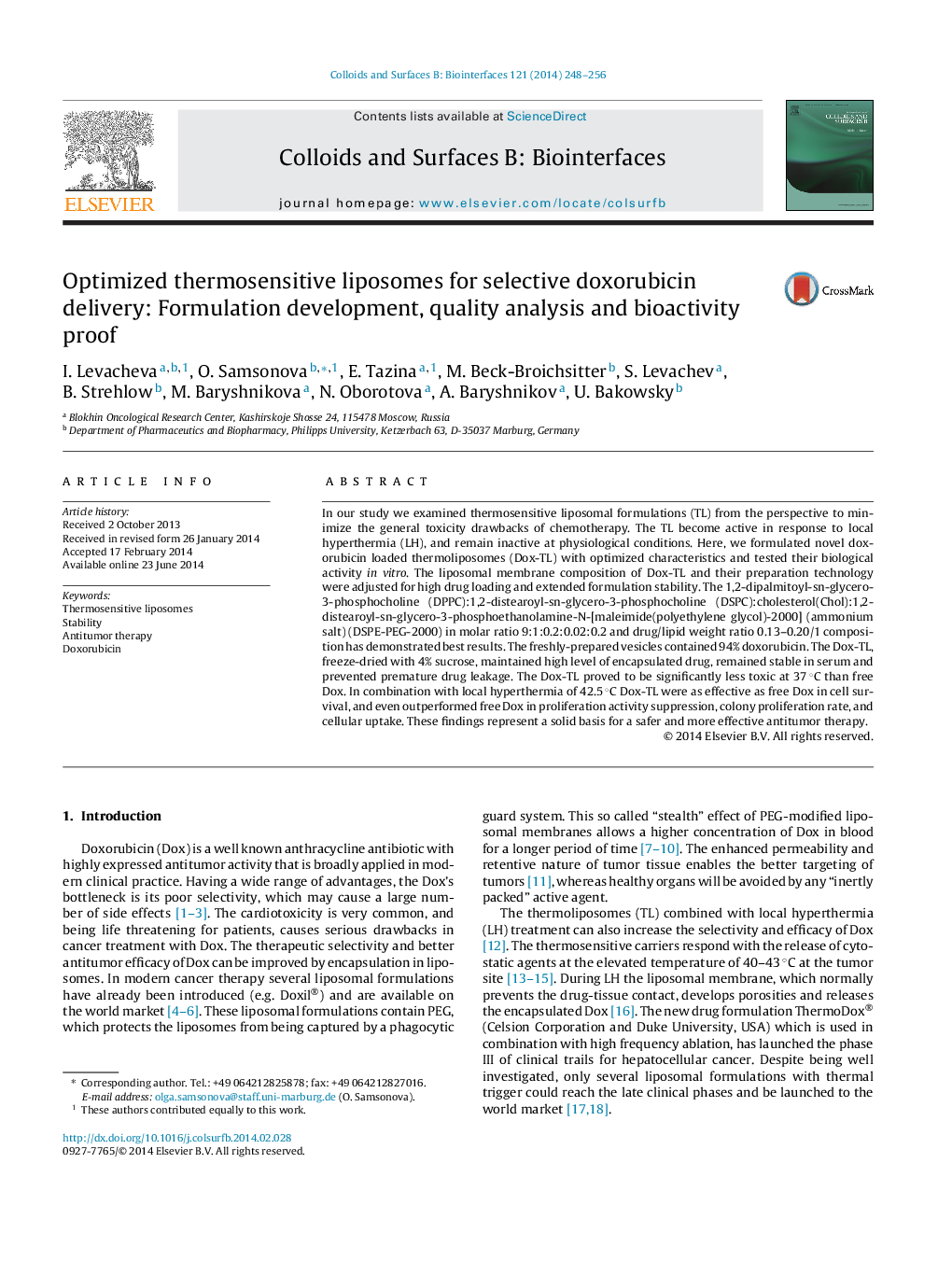| Article ID | Journal | Published Year | Pages | File Type |
|---|---|---|---|---|
| 599630 | Colloids and Surfaces B: Biointerfaces | 2014 | 9 Pages |
In our study we examined thermosensitive liposomal formulations (TL) from the perspective to minimize the general toxicity drawbacks of chemotherapy. The TL become active in response to local hyperthermia (LH), and remain inactive at physiological conditions. Here, we formulated novel doxorubicin loaded thermoliposomes (Dox-TL) with optimized characteristics and tested their biological activity in vitro. The liposomal membrane composition of Dox-TL and their preparation technology were adjusted for high drug loading and extended formulation stability. The 1,2-dipalmitoyl-sn-glycero-3-phosphocholine (DPPC):1,2-distearoyl-sn-glycero-3-phosphocholine (DSPC):cholesterol(Chol):1,2-distearoyl-sn-glycero-3-phosphoethanolamine-N-[maleimide(polyethylene glycol)-2000] (ammonium salt) (DSPE-PEG-2000) in molar ratio 9:1:0.2:0.02:0.2 and drug/lipid weight ratio 0.13–0.20/1 composition has demonstrated best results. The freshly-prepared vesicles contained 94% doxorubicin. The Dox-TL, freeze-dried with 4% sucrose, maintained high level of encapsulated drug, remained stable in serum and prevented premature drug leakage. The Dox-TL proved to be significantly less toxic at 37 °C than free Dox. In combination with local hyperthermia of 42.5 °C Dox-TL were as effective as free Dox in cell survival, and even outperformed free Dox in proliferation activity suppression, colony proliferation rate, and cellular uptake. These findings represent a solid basis for a safer and more effective antitumor therapy.
Graphical abstractFigure optionsDownload full-size imageDownload as PowerPoint slide
